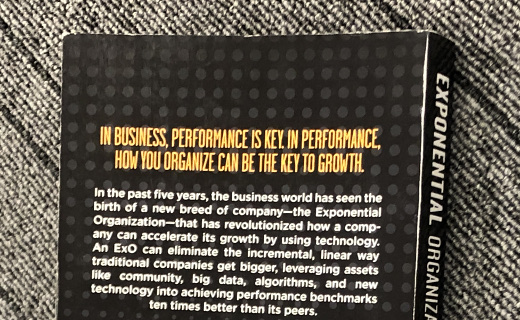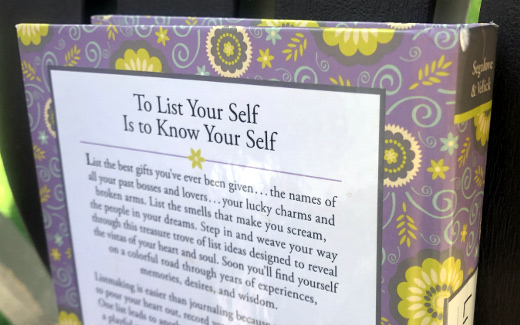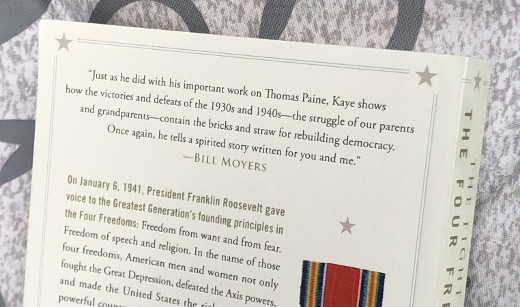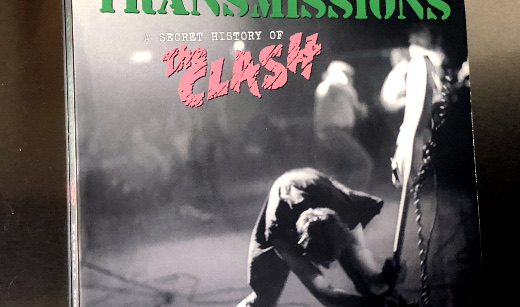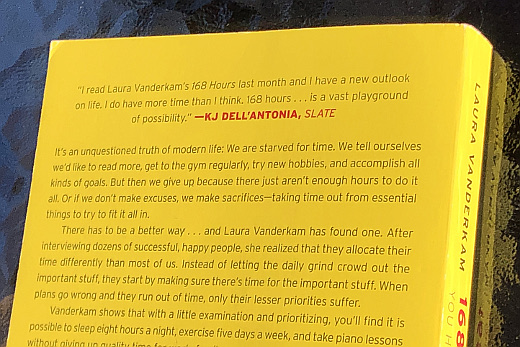My Takeaways From Exponential Organizations
Despite all odds and even with all going on in the world, some business just simply flourish. They make headlines and flaunt their success. They do this while driving down the road of fortune, fame and growth that was paved by those who didn’t do so well. But why is this? Is there a “secret formula” some these companies follow that others don’t?
The authors of Exponential Organizations believe there is a pattern to this; companies that leverage the latest in technology, big data, algorithms and the broader community will not only find success, but exponential growth as well. They call these firms ExOs, short for exponential organizations. The approach they modeled in this book back in 2014 has led to a global organization, OpenExO, that consults and trains people on ExOs. As well there are startup consulting firms like BostonExO, which is how I learned about this book, as my good friend Eric Patel started such a firm this past summer.
Intrigued by this, I bought a copy of Exponential Organizations to try to understand better what this was about, and from it I have several takeaways.
Gotta Have Attitude – If you think you can be successful, it will help you more than if you are unsure about it. Upfront I saw this with what they call a Massive Transformative Purpose, or MTP. Typically, someone will say their firm has a vision or mission, but if you want to consider yourself an ExO, you call it an MTP. Where on the surface an MTP and vision statement may look the same, the key to the former in the word transformative, which implied you are making a large, dare I say exponential, impact by what your business does.
Supertankers and Tugboats – The book covers all of the elements of what make up an ExO. In laying these out, it discusses how they can be used for creating a new firm, as well as applying them to an existing firm who likely doesn’t operate anything like a smaller, more nimble entity. A larger firm will setup a smaller firm or simply acquire one, often times integrating the smaller firm in the larger, and often times losing a lot of why they made the acquisition to begin with. The analogy I read of tugboats guiding supertankers really resonated with me – these smaller firms don’t have to be engulfed, and they can guide the larger firm and likely will be vital in their success.
Disrupt Thyself – Another idea I took from the book was to setup your own ExO to disrupt yourself. The thinking is here where you give the start-up money, your data and your intellectual property, and leave them alone. If someone is going to disrupt you, it may as well be yourself, and that way you can use what is created to save your business.
My Thoughts on Version 2 of the Book
As Exponential Organizations came out 6 years ago, a lot has changed in business and the world, and as a result some of the content – especially examples of businesses – is dated. The authors have thus embarked on an endeavor to update the book. In case anyone is interested, I will share my thoughts for a version 2 of the book.
Separate Theory from Examples – Woven in with the principles of what an ExO is are examples of entities that the authors consider either follow well the model of what an ExO are, or don’t. As these are tightly coupled, it can be distracting when a business is mentioned as a good example, but is no longer in existence today, as it was acquired or changed since the initial publication. This, however, is not just a challenge for this book but many I have read over the years, as businesses always come and go. Separating theory from examples will go a long way to keeping the main ideas relevant, even though the examples down the road may not be.
More Relatable Examples – Many of the examples of what an ExO were entities that seemed out of reach to me – Amazon, Zappos, Tesla, Google. Many books cite these businesses as pinnacle examples, and certainly they are. But for the average person, these businesses almost seem irrelevant; if you don’t become the next Google, are you a failure? There are certainly businesses that are smaller in scale, scope, yet truly transformative and exponential, and there should be a focus on them. Companies founded by people who were directly inspired by reading Exponential Organizations would be the ultimate examples.
An Online “Addendum” Connected by QR Code, Subscription – Almost every book has an accompanying Web site these days, and tucked away on them is an “errata” or section on changes to the book since the print copy went into the wild. The previously mentioned thoughts for version 2 should also leverage the Web or an app for this, and could tie them together with a QR code in each section of the book or an email newsletter subscription or RSS feed to notify readers of the book as to these types of changes. Registered users could even get an overall updated copy of the book over time when the authors decide to fold these changes into the published version.
Passing Along The Learning
As I do with all books I read, I pass it along once I have finished it and have written my takeaways here at The Hot Iron. In this case I am sending it to a work colleague. There are changes going on in our organization, and I want to share these ideas as they may be relevant to what we are doing.
I recommend Exponential Organizations to anyone starting a new business or working in an existing one. The ideas here can help you in evaluating how to move forward with projects and changes in your organization towards a transformative journey.
Editor’s Note: All links to the book are Amazon affiliate links, which means if you click on them and buy the book, then I make a few pennies.
This is from The Hot Iron, a journal on business and technology by Mike Maddaloni.
Did you enjoy this? Subscribe to The Hot Iron by RSS/XML feed or Read by Email
Book Take-Aways • (0) Comments • PermalinkMy Takeaways From List Your Self
Writing about oneself is tough for some people, including myself. Where someone may be comfortable writing on any other topic, when it gets personal it can become a challenge. Think about it –you are staring at a blank sheet of paper or screen and wanting to put something down that has never been written before. But once started, it becomes less of a burden.
This is the idea behind List Your Self. It is a journal with prompts that ask you to tell the story of you by listing things about you. Examples of list include “list all the names you’ve been called, endearing and not so” and “list all the things you’d like to say to your mother.” There’s a wide variety of lists under categories like “growing up,” “men and women,” and “greater truths.”
As I went through the book, which I finished recently, I took away a lot from it and its exercises.
It made me think – Where listing my favorite foods as a child poured from my brain like a waterfall, other topics took some mental gymnastics to answer. Whether I forgot about it or tried to put it out of my mind I don’t know, but I did fill out something for each and every page and list prompt.
Some lists were easier than others – Even if what I was going to put down on a list was top of mind, there were times that it was hard to write. I chalk it up to what I said in the opening, as some of these things are being put down in a tangible form for the first time. Nothing salacious or illegal though… as far as you know.
It took a while – I started the book back in 2016 and just finished it now midway through 2020. Where I tried to do one page a day, there were periods – like when I moved – that I had the book packed away and then unearthed it and started back into it. I had a similar experience with the exercises in 1 Page At A Time. Near the end I really just wanted to finish it and did several pages a day.
If you’d like to start chronicling your life, or simply give yourself a daily challenge of a different kind, I highly recommend List Your Self. This book was given to me as a gift, and as it’s full of personal stories of myself I am clearly not passing it along to anyone else! What I am going to do is pass along another journal to another friend, one of a similar genre but more about telling my life as a father… namely as I have another book very similar to it and started back when I first became a father but never came close to finishing it. Needless to say I have restarted this other journal and am taking it one page at a time.
This is from The Hot Iron, a journal on business and technology by Mike Maddaloni.
Did you enjoy this? Subscribe to The Hot Iron by RSS/XML feed or Read by Email
Book Take-Aways • (0) Comments • PermalinkMy Takeaways From The Fight For The Four Freedoms
For myself growing up in New England, I was always interested and intrigued about the history of the United States. As a child, I was engrossed with the celebration of the Bicentennial of our country. Being in the area where early events in America happened, it was almost like I was absorbing history rather than studying it.
For a lot of the rest of the history of my homeland, however, I don't know it to the same level of depth. Much of it to me is top-line to the timeline, but without a lot of the minutiae. This is why I was interested in reading The Fight for the Four Freedoms by Dr. Harvey Kaye. I learned about the book after I heard Kaye on local radio interviews. I borrowed a copy of the book from a friend to learn the author's take on this time in history.
My takeaways from the book were a mix of thoughts on myself and history.
I had no recollection of ever learning about the Four Freedoms – As I read through the book, I often ask myself, why didn't I already know about this? Thinking back on what I learned in public schools, that one history class in college, stories from family members who lived through that era as well as my own personal reading, I knew a lot of the basics – the Great Depression, President Franklin Delano Roosevelt (aka FDR), the New Deal, Social Security and of course the U.S.’s entry and time in World War II. All things considered, I can’t recall the Four Freedoms at all.
In short, the Four Freedoms were goals or quests FDR had for America: freedom of speech, freedom of worship, freedom from want and freedom from fear. He first presented these when he addressed Congress in January, 1941. I know the first 2 are in the U.S. Constitution. The last two, in my own assessment, are “covered” with the phrase “life, liberty and the pursuit of happiness” in the U.S. Declaration of Independence.
There were a lot of government “acronym” agencies during this time, and now – Thinking back on my own history lessons, I knew about the Work Progress Administration (WPA) and the Tennessee Valley Authority (TVA), but that was about it. The book lists programs after program, agency, after agency, and all were referred to the acronym for their much longer names. We of course have this today, with new ones created just this year. If I were to look back my guess is there were more in between and even before this time. Each acronym comes with its own overhead needs to exist: budget, staff, etc., and one always hopes the results are worth the effort to create it.
History plus opinion of this period of time – I knew going into the book, from listening to him on radio interviews, the author has strong liberal / progressive political views. As I read the book, this was evident in the very positive tone given to FDR and all that government did, in contrast to the negative tone towards business and free enterprise. Granted from my own knowledge I know all wasn’t good from business, and many had the same feelings towards the government. I was able to read beyond this, however, and still got the essence of the Four Freedoms. Not bad for a self-described centrist and supporter of business and entrepreneurship.
I recommend The Fight for the Four Freedoms for anyone who is interested depth on this topic and period of time. It painted a good picture of the beliefs of FDR, those who followed him and the meaning behind his goals. As I borrowed this book, I returned it to its rightful owner and did not pass this one onto someone else.
This is from The Hot Iron, a journal on business and technology by Mike Maddaloni.
Did you enjoy this? Subscribe to The Hot Iron by RSS/XML feed or Read by Email
Book Take-Aways • (0) Comments • PermalinkMy Takeaways From Stealing All Transmissions
By the time I got my college first radio show, the band The Clash were just breaking up. That fact had no bearing on their half-dozen albums being mainstays on many shows under the alternative/progressive/modern rock category throughout my 4 years at the station.
It was the memories of their songs and the iconic cover of their third album, London Calling, that drew my attention to the book Stealing All Transmissions: A Secret History of the Clash by Randal Doane. I saw it at a book vendor at last year’s Riot Fest in Chicago, and I had to buy it. Despite the role music has in my life, I admit I haven’t read a lot of books or stories on bands or musicians, and thus this purchase.
The book isn’t as much a story of just the band as it is the radio stations and disc jockeys in New York City that introduced their music to their audiences. It takes place in the late 1970’s, where clubs like CBGB were hosting rock and punk bands from around the city as well as the world, and The Clash was part of that culture.
As this book took me down a road that I was only vaguely familiar with, I have a few takeaways from this journey.
The role of DJs in breaking bands – The style of radio show on college radio in those days, where the DJs picked the artists and songs to play, was about finalized as the only place to hear music in this fashion. Commercial radio stations were increasingly owned by conglomerates that owned many stations across the country and even in the same market. What was played on the air was centrally controlled, and automation in the DJ booth made this easier.
Stealing All Transmissions talks of the DJs and stations that played bands like The Clash, Blondie and The Ramones and their influence to their rise in popularity. DJs got to know the musicians and vice versa back then, and the story tells the tale of the ending of this influencing.
The decline of the DJ – For as much as you would listen to a radio station for the music, the DJ was also integral to your listening pleasure. This did not end in the 80’s but has continued to wane even to the present day. The previously mentioned automation made their disappearance easier as well. Radio personalities today are known more for talk shows rather than music shows.
The romanticism of radio and music – There was something special about playing music in the 70’s and 80’s. A simple needle dragged around a vinyl platter presenting the talent and nuances of the musicians in the home and DJ studio; there was a warmth to it that has no comparison to digital music today. Listening to music in the car comes a little closer to the experience from those days, but is quickly drowned out when the kids want me to change it from 1st Wave on SiriusXM to Radio Disney.
Though I grew up several hundred miles from New York City and wasn’t listening to the featured radio stations in the book back in the day, I can relate to their stories from my own experiences with both college and commercial radio. Stealing All Transmissions, where the title comes from The Clash song This is Radio Clash, is a great story where Doane uses quotes from the band, other musicians and the DJs of that time to tell a tale of the overall feeling from those days. If you love The Clash (and I hope you do!) or love or are curious about the “glory” days of radio, I recommend this book to you. As for my copy, it is going to a friend who was the general manager of my college radio station the year before I was, and a man who has many great stories about bands as well.
This is from The Hot Iron, a journal on business and technology by Mike Maddaloni.
Did you enjoy this? Subscribe to The Hot Iron by RSS/XML feed or Read by Email
Book Take-Aways • (0) Comments • PermalinkMy Takeaways From 168 Hours
“There’s not enough time in a day.” It’s a phrase I hear a lot, and one I say myself. A lot. Often the phrase is said at the end of the day, following many things done but with still many more to do. There’s 24 hours in a day, yet people still have a hard time getting done all that we want.
What if we look at it differently, from the point of view of an entire week rather than just a day? Where there’s only 24 hours in one day, there’s 168 hours in a 7-day week. Does it seem more possible to get done with more time? This is the idea behind the book 168 Hours: You Have More Time Than You Think by Laura Vanderkam.
168 Hours is more than just another time management book. It explores the possibilities what you can do when you look at time and tasks differently, what you should do as well as what you could have others do for you. As I read through the advice and stories, a few takeaways came to mind.
Time logging is hard when we don’t block time – I have done time logging before, namely when consulting and tracking my time to bill to clients. I also used the method in the book of tracking all tasks every hour for a week, literally 24/7. Where it gets difficult is when you do multiple things in a time period, say a half hour, and you are not focusing on one thing. Time blocking is something I do as often as I can to dedicate a period of time to one task.
Working on 100 Dreams – So what do you want to do with your new-found time? After realizing you may actually have more time than you thought, the author suggests creating a list of 100 dreams of things you would like to do in your lifetime. This is in itself is an intriguing and sole-searching experience, and is something I am still working on. Vanderkam says that not all of the dreams have to be big, but why not?
15 minute tasks – What if all of the sudden you had 15 minutes to spare without interruption, what would you do? When we think about our to-do’s, we often just see the larger end result of the effort, and not that it is a collection of smaller tasks. This is the idea behind Scrum and how I have been looking at both my work and personal projects since I got my Scrum certification, by breaking a project into smaller tasks and executing them in priority order working towards that end goal.
Clutter and horizontal surfaces – Apparently experts know the way for you to feel your space – whether home or office or wherever – is clean and it’s with having clear horizontal spaces. So if the kitchen floor isn’t spic and span but the countertops are clear of cutting boards and dishes, then you feel like you have a clean kitchen. And I have to admit, I agree.
168 Hours uses a lot of personal stories and historical contexts in discussing time usage. Where using such a chart of track 168 hours may be daunting, it’s a good exercise. After going through this myself I recommend it to anyone who is overwhelmed or simply wants to analyze where the time goes to consider it. Perhaps when confined at home isn’t the best time to track your time, but it’s a good time to read the book. Speaking of which, I will be sending this off to a colleague who commented they thought the book was interesting to them when I had posted about it initially on LinkedIn.
This is from The Hot Iron, a journal on business and technology by Mike Maddaloni.
Did you enjoy this? Subscribe to The Hot Iron by RSS/XML feed or Read by Email
Book Take-Aways • (0) Comments • Permalink
